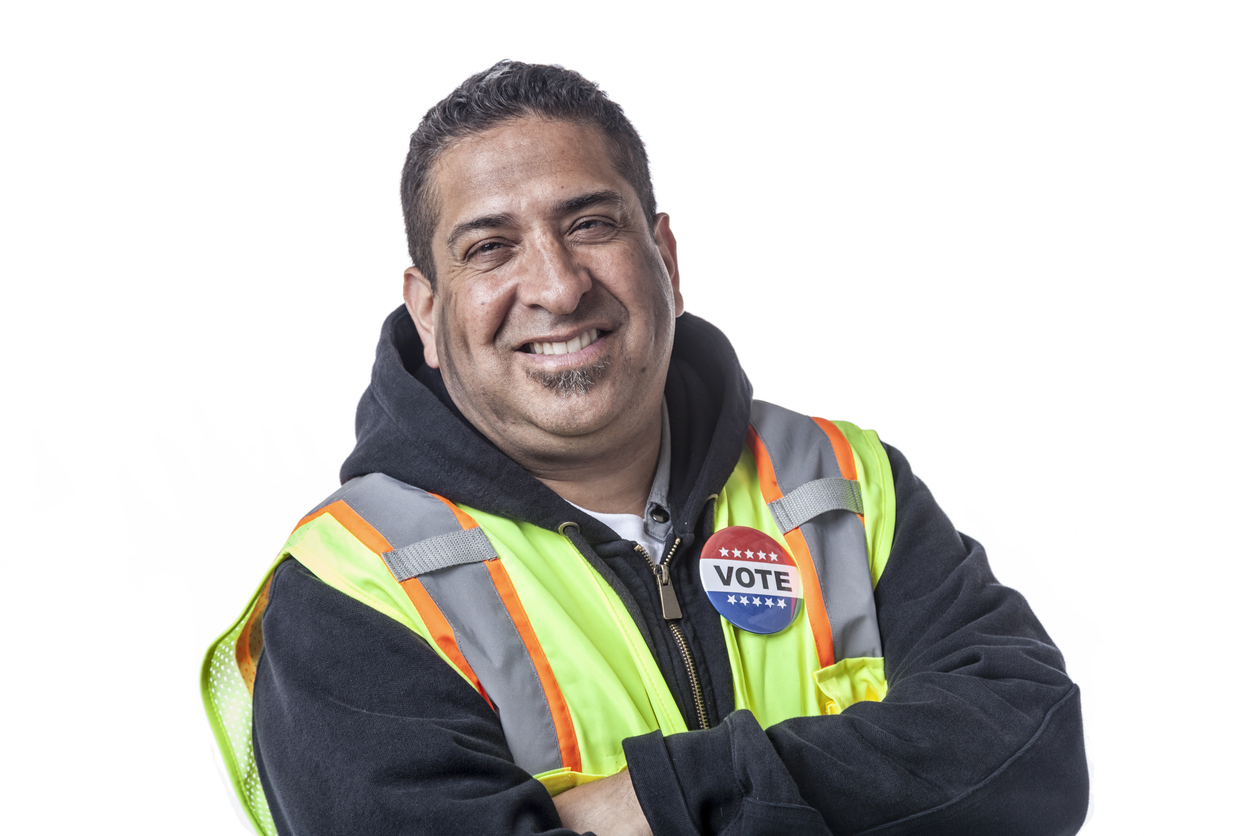Time Period: 2020
Location: United States
Main Actors: AFL-CIO, AFSCME, SEIU, AFT, UNITE HERE, union members
Tactics
– Institutional Action
The 2020 election tested the strength of US democracy. Due to the COVID-19 pandemic, poll workers were scarce, in person voting was challenging and unfeasible in some jurisdictions, and typical “get out the vote” campaigns were stymied by social distancing practices. Authoritarian figures used these new difficulties to question established and safe voting mechanisms, such as mail-in ballots. Unfounded fears over voter fraud led to the closure of voting centers, the limiting/removal of drop-off ballot boxes, and the encouraging of voter/poll worker intimidation.
Recognizing the threat to election systems, unions stepped up to ameliorate poll worker shortages. As large, organized institutions, unions were well-positioned to recruit poll workers. The AFL-CIO, and some of its federation members, such as UNITE HERE, the United Steelworkers, the American Federation of Teachers, and the American Federation of State, County, and Municipal Employees (AFSCME) all enacted plans to train poll workers. For example, AFSCME partnered with Power the Polls to educate and place 1,200 poll workers, all drawn from their membership rolls. Discussing their poll worker contribution, AFSCME President Lee Saunders remarked, “Who better to perform this important public service than people who have made a career out of public service.” Other unions, such AFL-CIO, similarly partnered with Power the Polls.
In addition to poll worker training, unions engaged in widespread campaigns to encourage voting despite 2020’s challenging environment. For example, the Service Employees International Union (SEIU) dedicated substantial funds towards a get out the vote campaign. This campaign, titled, “Your Vote is Essential” especially targeted voters of color. Online disinformation campaigns spread lies prior to the 2020 election to inhibit the vote of communities of color. SEIU sent canvassers door to door, who informed citizens of their rights and encouraged voting. By canvassing in these communities, unions disrupted voter suppression efforts, especially important at a time in which COVID-19 strained usual get out the vote campaign efforts.
The efforts of unions to protect the electoral process through dedicated campaigns reveal important takeaways for pro-democracy advocates. In particular, these efforts highlight unions’ strength as well-established organizations with the numbers and organization necessary to mobilize large, coordinated groups. When COVID-19 strained voting infrastructure, unions were uniquely positioned to step in. Unions were also able to substitute for what are often civil society efforts, such as get out the vote campaigns. Unions also demonstrated ways in which democracy building can be non-partisan. Poll workers are a necessary part of any functioning democracy, and their training and support is one-way that organizations can combat authoritarian pushes without facing accusations of partisanship. In all, the campaigns above showcase how unions can play a role in uplifting established institutions, especially during a national crisis and dedicated attack by anti-democratic forces.
Where to Learn More
– AFSCME launches first-ever program to recruit 1,200 poll workers
– SEIU Reaches Millions of Infrequent Voters in Final Days of the 2020 Elections
– What Unions Are Doing To Protect American Democracy
– Labor Unions Plan To Turn Out An Army Of Poll Workers For The Election
– Union Impact on Voter Participation—And How to Expand It
You can access all the caselets from the Pillars of Support Project here.

